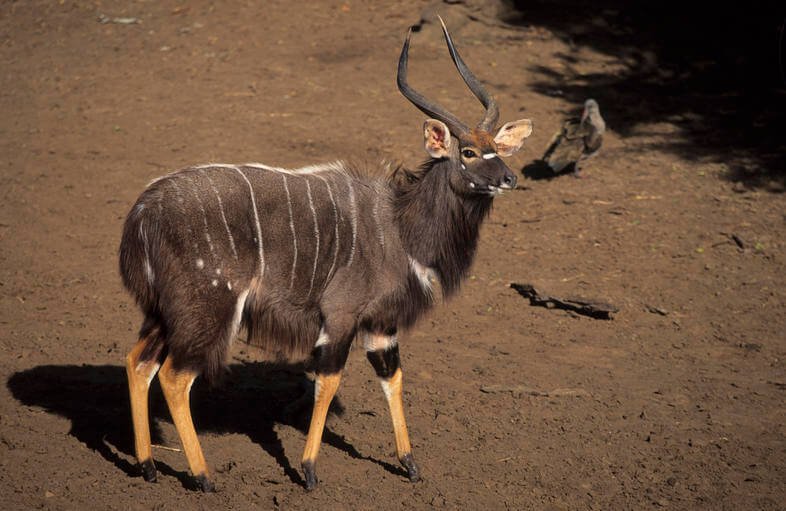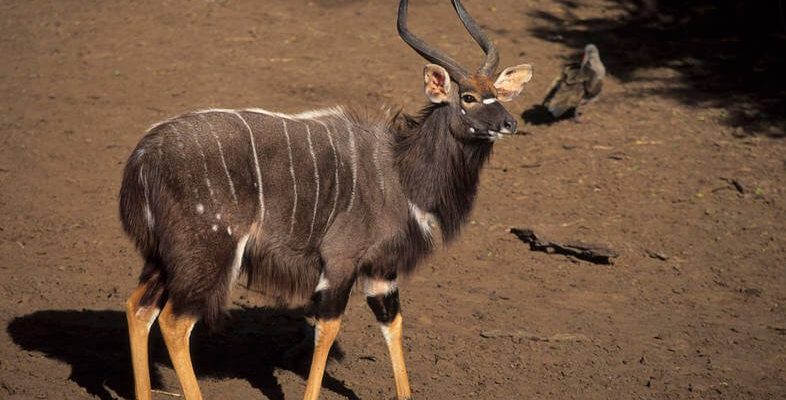
You might not initially think of an antelope as smart, but here’s the thing: intelligence in animals can show up in surprising ways. Just as we measure human intelligence through problem-solving and adaptation to environments, animals like the Nyala have their own ways of navigating the world around them. Let’s unfold the layers of their behavior and cognitive skills together!
Understanding Nyala’s Habitat and Behavior
Nyala are primarily found in bushy and forested areas of Southern Africa, often near water sources. Unlike some other antelope types, which might roam vast plains, Nyala prefer these thicker, more sheltered environments. This choice of habitat is significant because it shapes their behavior and intelligence in several ways.
Living in dense brush provides protection from predators but also presents challenges in finding food. This setting forces the Nyala to be clever. They have to remember the locations of food sources, adapt to seasonal changes, and understand the behaviors of nearby animals, both prey and predator. For example, when a Nyala senses danger, it might not only flee but also find cover in thick foliage. This ability to assess risks shows a level of situational awareness and adaptability that hints at their cognitive capabilities.
Social Structure and Communication
Nyala are social animals, often seen in small groups, especially females and their young. Males tend to be solitary or form loose associations, particularly during mating season. Their social dynamics reveal another layer of intelligence. Like many animals, Nyala communicate through vocalizations and body language, which display their emotions and alert others of potential dangers.
For instance, a Nyala might emit a series of barks or bleats to signal alarm. This form of communication indicates not just awareness of their surroundings but also a social intelligence that helps them live in groups successfully. They can read each other’s cues and adjust their behaviors accordingly, which is essential for survival in the wild.
Problem Solving and Learning Abilities
Now, let’s dig into how Nyala demonstrate problem-solving skills. Just like us, their ability to learn from experiences plays a crucial role in their survival. For example, if a Nyala encounters a new obstacle, like a fence or a change in terrain, it can learn to navigate it over time.
Research shows that animals who can adjust their strategies to overcome obstacles tend to be more adaptable and intelligent. Nyala exhibit this adaptability when they learn to find food sources in different seasons, whether it’s foraging for leaves during the dry season or grazing on grass when it’s abundant. They also remember which places are safe to feed in and which areas to avoid due to predators.
Foraging Strategies and Diet
Speaking of food, the Nyala’s diet plays a significant role in its intelligence. They are browsers, which means they prefer to feed on bushes, shrubs, and trees rather than just grass. This foraging strategy not only requires physical agility but also cognitive skills to identify and remember the best feeding spots.
Nyala are known to be selective eaters, opting for the most nutritious leaves and fruits. They can distinguish between different types of plants and understand which are safe to eat. Such discrimination shows an advanced level of environmental awareness, crucial for maintaining their health and energy levels.
Predator Awareness and Survival Skills
In the wild, survival isn’t just about finding food; avoiding predators is equally important. Nyala have developed keen senses and awareness, enabling them to detect threats from a distance. Their large eyes and excellent hearing help them spot potential dangers, which is where their cognitive abilities really shine.
When they sense danger, Nyala will often freeze first, remaining completely still to avoid detection. If the threat persists, they weigh their options, often choosing to run or find cover. This decision-making process highlights their ability to assess situations and react, showcasing higher-level thinking skills that aren’t common among all animals.
So, how smart is a Nyala? Honestly, they possess a unique combination of problem-solving skills, social intelligence, and situational awareness that showcases their cognitive abilities. Nyala are more than just beautiful antelopes; they are clever creatures capable of adapting to their environment and communicating with each other effectively.
In a world often dominated by perceptions of intelligence being solely human, it’s refreshing and enlightening to recognize the depth of understanding animals like the Nyala demonstrate daily. Understanding their behaviors not only enriches our appreciation for these animals but also underscores the diverse ways intelligence manifests in the animal kingdom. So next time you see a Nyala, remember the remarkable mind behind that graceful exterior!

